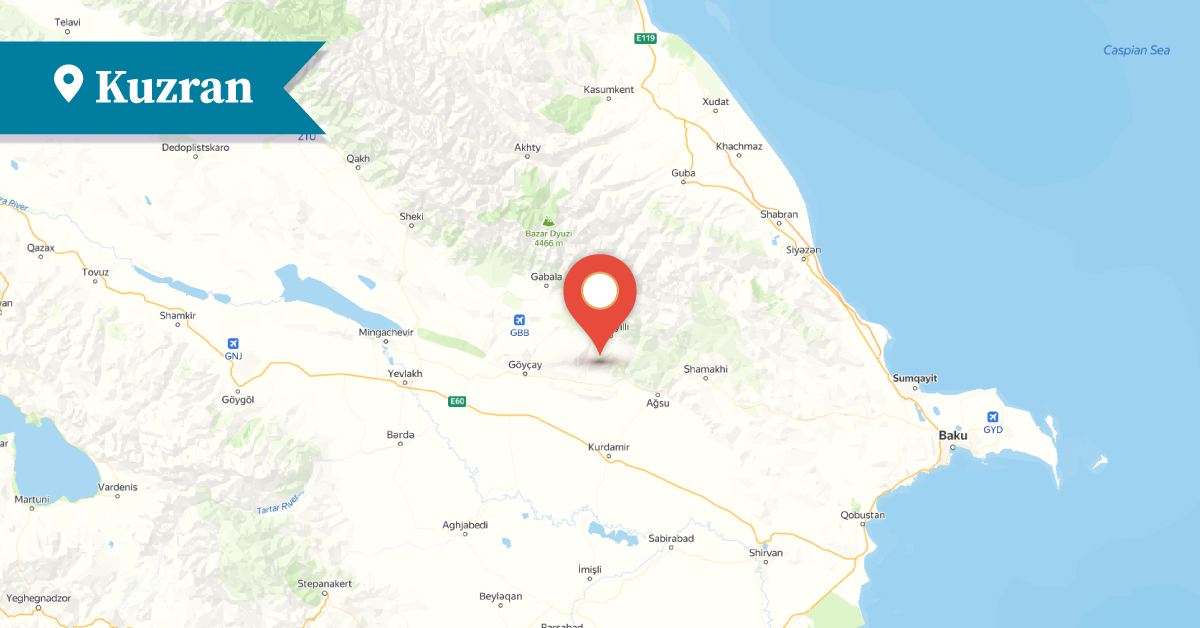2025
2025
2025-05-12

Kuzran, located 12.5 kilometers southwest of the district center, was one of the Armenian-inhabited villages of the Ismayilli district until 1918. Its inhabitants had migrated from the Khachen province of Artsakh and from the villages of Gishi, Taghavard, Taghlar, Hatsi, Hghorti, Nngi, Togh, and Kert. The village is also known by the names Gyuzran, Gyuzaran, and Kyuzran.
In 1861, the village of Kuzran had 21 Armenian households. During the visit of Bishop Makar Barkhutaryants in 1886, there were 46 Armenian households in the village, with a population of 202. By 1914, Kuzran was entirely inhabited by Armenians, having 268 residents.
In the summer of 1918, the village was destroyed as a result of attacks by Turkish forces and local Tatars, after which it was depopulated of its Armenian inhabitants.
Following the establishment of Soviet rule in Azerbaijan, the few surviving residents of Kuzran who had escaped the massacres resettled in various locations.
About 1.5 kilometers north of the former village site, in a place known as Taghtasan, the cemetery of Kuzran village was still preserved at the time of a visit by monument specialist Samvel Karapetyan in 1985. The researcher recorded around 15 inscribed tombstones dating from the 18th century to the early 20th century, and published the inscriptions from the two oldest preserved tombstones in the cemetery, dating to the 18th–19th centuries.
This is the tombstoine of Ter Ghazar, 1711.
This is the tombstone of Paghi Abrahamyan, a resident of Kuzran village, 1825.
Near the village, there was an old pilgrimage site known as Nahatak (Martyr). M. Barkhutaryants, who visited the area, wrote: "Above the village there is an old pilgrimage site called Nahatak, surrounded by many ancient trees and old graves."
The ancient village of Kuzran is now an abandoned site.
Bibliography
Barkhutaryants M., Land of Aghvank and its Neighbors: Artsakh, Yerevan, 1999.
Karapetyan S., The Armenian Lapidary Inscriptions of Aghvank Proper, Yerevan, 1997.
Karapetyan, S., Aghvank Proper, Part 1, Yerevan, 2024, pp. 146-147.